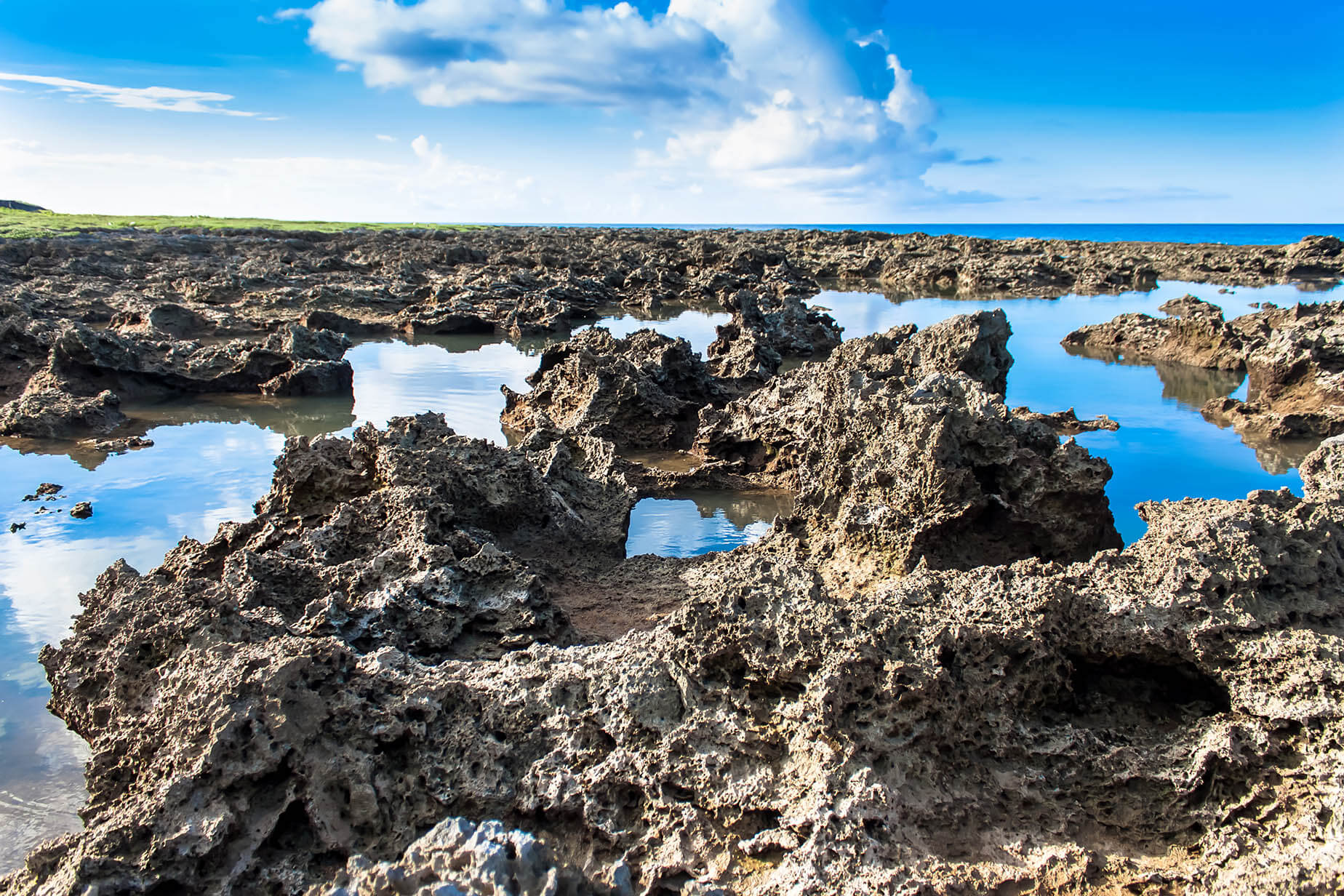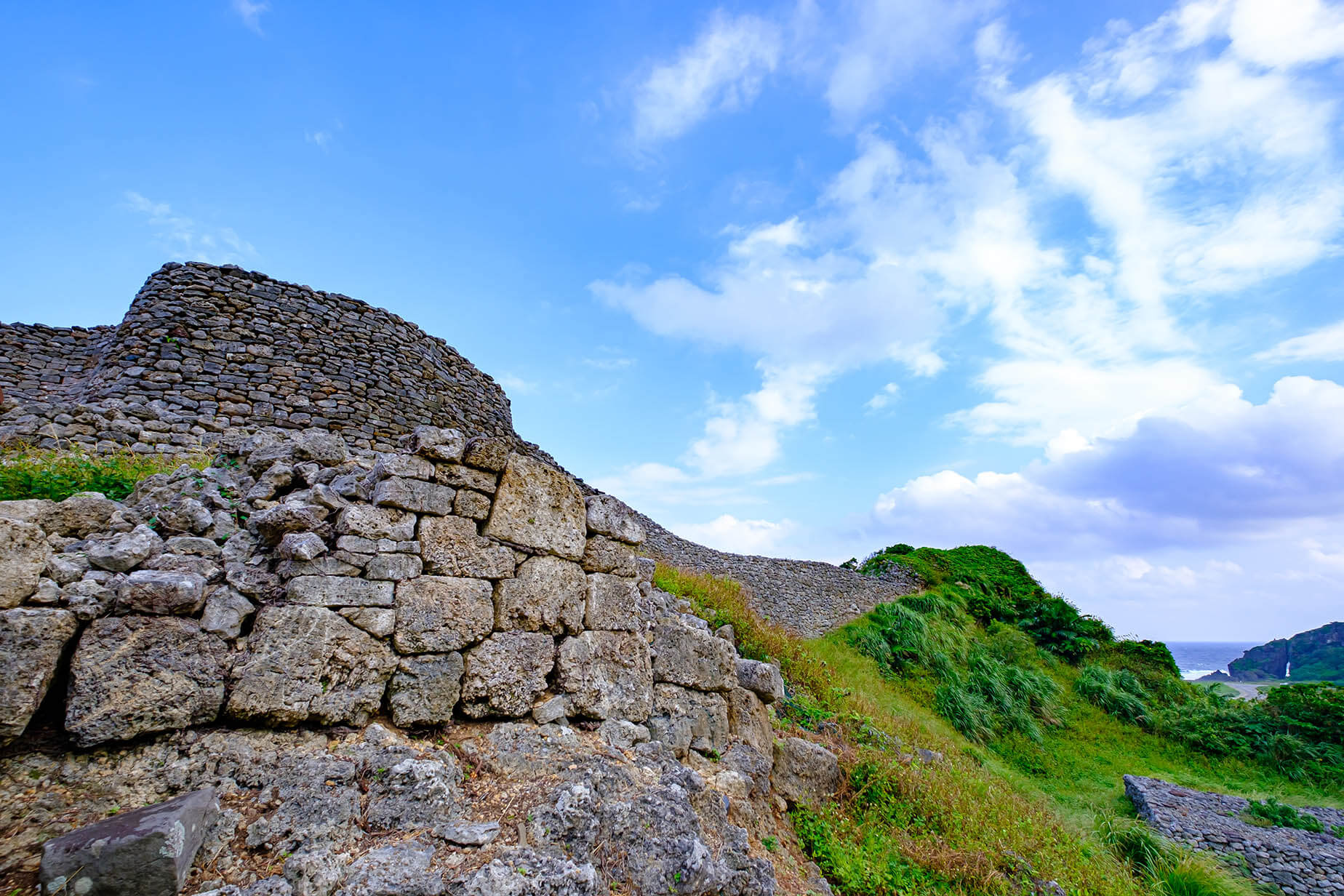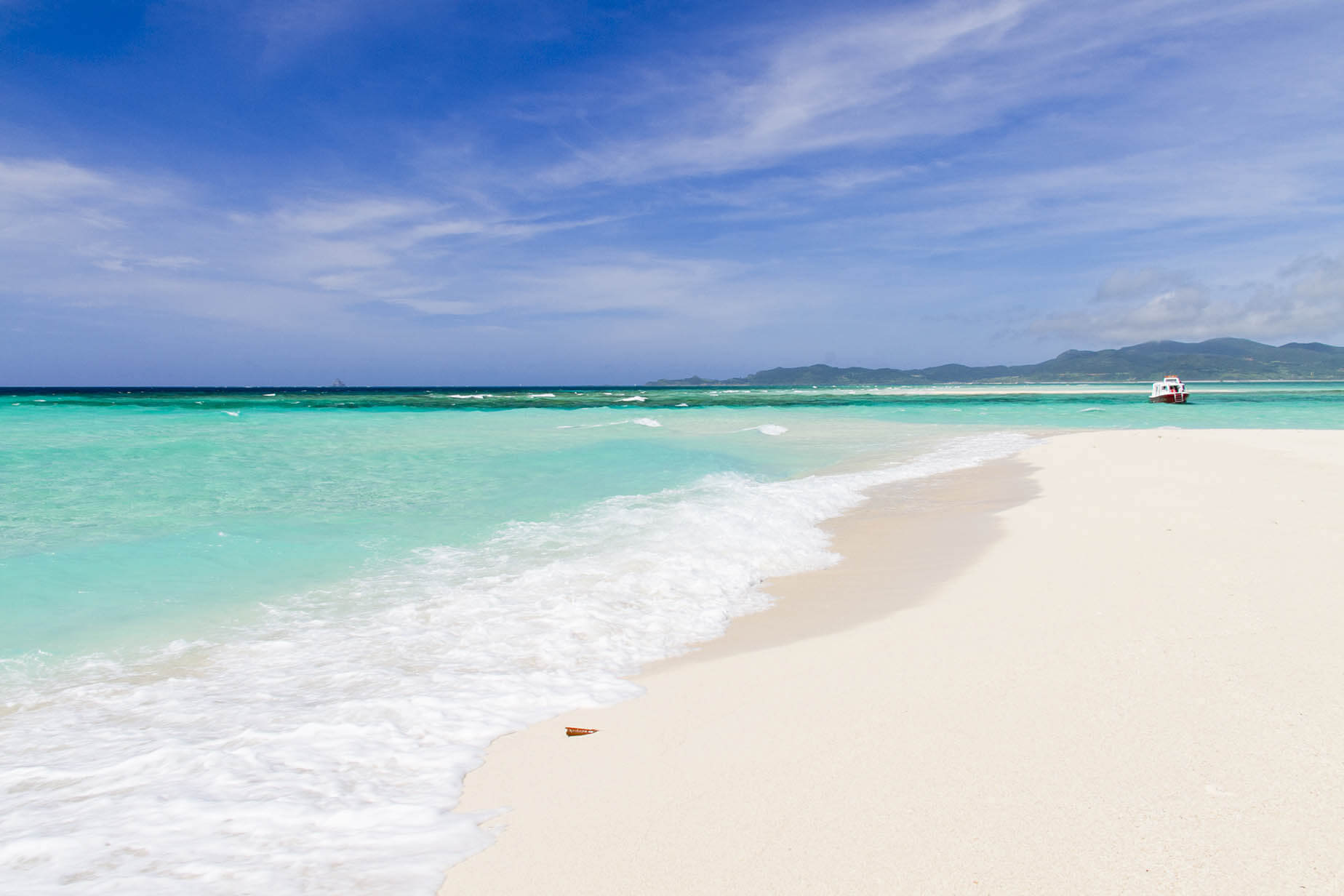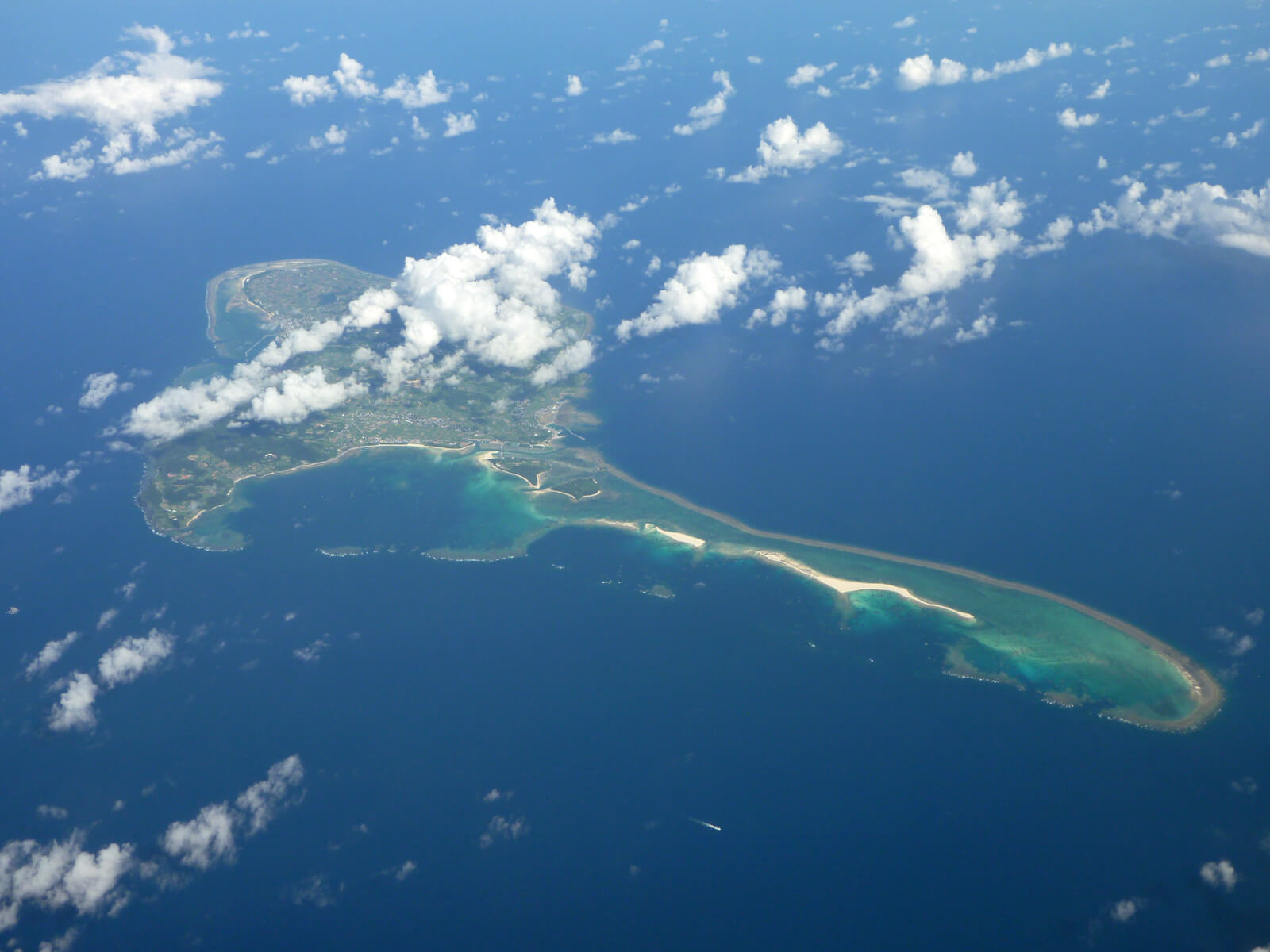Kumejima, the Discreet Island
Despite being far less visited than the other islands of Okinawa, Kumejima offers natural treasures and invaluable craftsmanship.

© Visit Okinawa
When travellers think about the island of Okinawa, it’s the eponymous island that comes to mind first, or the traditional Taketomi. Kumejima, however, which covers an area of 59 km2 and has 8000 residents, has its fair share of attractions for travellers wanting to discover a tropical paradise in Japan.
Unique natural sites
This volcanic island is the ideal destination for lovers of fine sand. Kumejima is particularly known for its three white sand beaches: Shinri to the west, Ara to the south-west and Eef to the south-east, with the latter being considered one of the 100 most beautiful beaches in Japan. Visitors can do watersports there, like diving and windsurfing, and also enjoy the large sandbank that is revealed at low tide and that is perfect for long walks. There is also another sandbank, Hatenohama, but this one can only be accessed by tour boat: it is seven kilometres long and visitors can spend half a day or a full day there.
Kumejima is also known for another remarkable natural site, Tatami-ishi. This rock formation is several thousands of years old and was created due to a volcanic eruption. Its name comes from the shape of the stones, all of which are hexagonal or pentagonal, with a diameter of a little over a metre, reminiscent of the shape of tatami found in traditional Japanese rooms. This formation, located to the east of the island, is only visible at low tide. Kumejima is also renowned for the presence of fireflies, from the beginning of April until May. A protected species endemic to Okinawa island, they can only be seen on Kumejima.
Silk and spirits
Food lovers will appreciate Kumejima for its tiger prawns, which have existed on the island since 1985 and which are used to enhance typical dishes from November until March. They can also head to the distillery where a type of awamori known as Kumejima no Kumesen, a spirit from Okinawa, is made, and it is open for visits all year.
Lastly, Kumejima is also where pongee silk known as Kumejima Tsumugi, a rare, dark brown coloured silk, is made, and its colour comes from a mixture of plants and mud rich in iron. There is a museum dedicated to it, the Kumejima Tsumugi no Sato museum.
Kumejima is easy to get to by plane from Naha, the capital of Okinawa island. Six to eight 30-minute flights are scheduled each day, and in summer, travellers can take a direct flight there from Haneda airport in Tokyo. It is also possible to get from Naha to Kumejima by ferry. Once there, public transport is somewhat unreliable, so it is advisable to hire a car, scooter or bike to be able to travel around freely.
More information about Kumejima can be found on the Okinawa tourist office website.

© Visit Okinawa

© Visit Okinawa

© Visit Okinawa

© Wikimedia
TRENDING
-
Hiroshi Nagai's Sun-Drenched Pop Paintings, an Ode to California
Through his colourful pieces, the painter transports viewers to the west coast of America as it was in the 1950s.

-
A Craft Practice Rooted in Okinawa’s Nature and Everyday Landscapes
Ai and Hiroyuki Tokeshi work with Okinawan wood, an exacting material, drawing on a local tradition of woodworking and lacquerware.

-
The Tattoos that Marked the Criminals of the Edo Period
Traditional tattoos were strong signifiers; murderers had head tattoos, while theft might result in an arm tattoo.

-
David Bowie Dressed by Kansai Yamamoto
The English singer was strongly influenced by 'kabuki' theatre and charged the Japanese designer with creating his costumes in the 1970s.

-
‘Seeing People My Age or Younger Succeed Makes Me Uneasy’
In ‘A Non-Conformist’s Guide to Surviving Society’, author Satoshi Ogawa shares his strategies for navigating everyday life.





